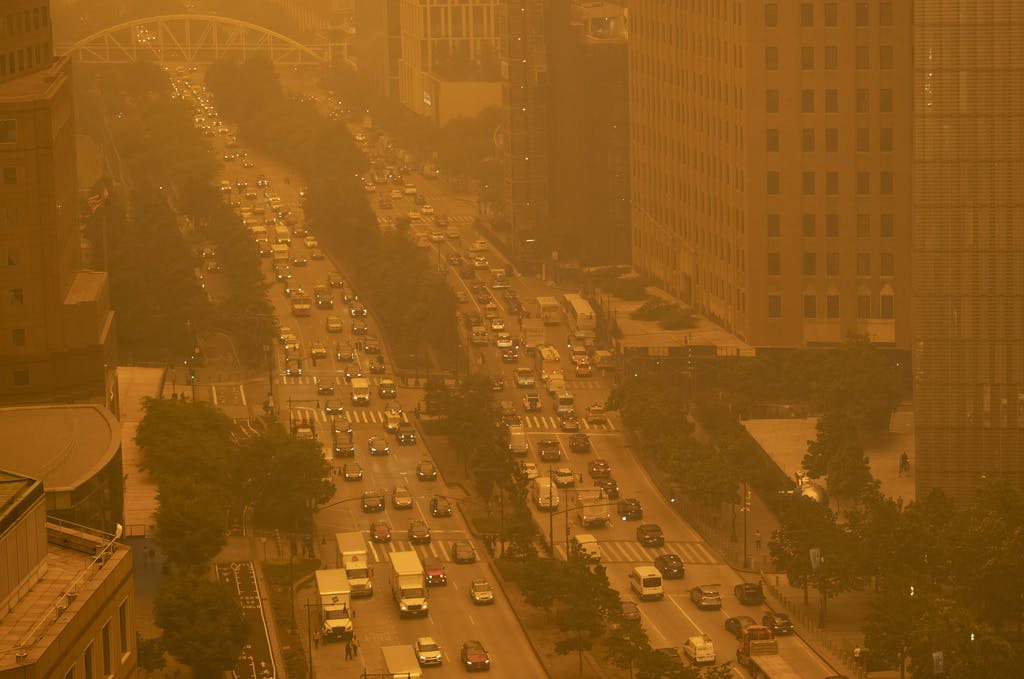High Risk of Canada Wildfires Predicted Through the Summer After Smoke Inundated New York
Quebec’s minister of public security warns the fight against fire ‘will last all summer’ as hundreds of blazes rage throughout the country.

Fears are mounting that rampant wildfires in Canada will burn throughout the summer as Canadian officials sounded alarms after smoke from the blazes inundated the East Coast last week, blanketing New York City for more than a day in an alarming amber haze.
More than 440 active fires raged throughout the country on Monday, with around half of them classified as uncontrolled, said the official Canadian Interagency Forest Fire Center.
While some politicians cited “climate change” as the culprit, there has been little hard evidence to suggest that conflagrations are anything more than nature’s progress in which wildfires tear through old-growth forests, making way for the new.
The above average risk of fires across Canada will persist until September due to drought and high temperatures, with the western part of the country at a much higher danger level, according to a Canadian government agency, Natural Resources Canada.
Quebec’s minister of public security, Francois Bonnardel, said the province had never before had to evacuate so many people due to fires.
“We are going to have a fight that we think will last all summer,” Mr. Bonnardel said on Saturday, according to Agence France-Presse.
The uncontrolled fires in the province have subsided since last week, though, with thousands of Quebec residents who were evacuated from their homes due to the blazes allowed to return on Monday, the Canadian Broadcasting Corporation reported.
More than 2,500 fires have burned close to 19,000 square miles already this year, more than 10 times the area affected at this point last year, according to the Canadian Interagency Forest Fire Centre.
Wildfires are part of a forest’s natural cycle and regularly occur across Canada. Since 1990, an average of more than 9,600 square miles of Canadian natural areas have burned each year, although the annual toll varies widely, according to Natural Resources Canada.
Most of the fires are ignited by lightning or human error. Only a small number are set by forest managers, although controlled burns are a valuable tool for preventing conflagrations by eliminating the build-up of fuel, said Natural Resources Canada.
A report in a peer-reviewed science journal, Progress in Disaster Science, sounded the alarm about Canadian fire control in 2020, urging authorities to “allow more wildfire” to mitigate risk, among other recommended measures.
Canada’s prime minister, Justin Trudeau, and minister of environment and climate change, Steven Guillbeault, injected some politics into the matter when they blamed man-made climate change for the increase without citing evidence.
“We’re seeing more and more of these fires because of climate change. These fires are affecting everyday routines, lives and livelihoods, and our air quality,” Mr. Trudeau said in a statement last week. “We’ll keep working – here at home and with partners around the world – to tackle climate change and address its impacts.”
New York City’s air quality deteriorated again over the weekend to a “moderate” level but remained much better than early last week when the air was considered “hazardous.”
The city was ranked the 16th worst worldwide for air quality on Monday, according to the monitoring company IQAir.
